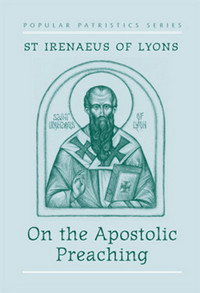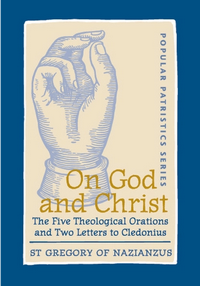 On the Unity of Christ
On the Unity of Christ
by Cyril of Alexandria, John Anthony McGuckin (Translator)
DETAILS: Series: Popular Patristics Series, #13 Publisher: St Vladimir's Seminary Press Publication Date: March 23, 2005 Format: Paperback Length: 133 pg. Read Date: August 25, 2024

What’s On the Unity of Christ About?
In a dialogue between characters creatively named A and B, Cyril advances–Scripturally, theologically, and philosophically–the classic case against Nestorius and his teachings, advancing what’s now received as the orthodox position on Christ’s nature as the god-man.
Uh, What?
I haven’t read a lot of the books in this series, but of the handful that I have read, this is one that had me scratching my head the most. There were a few times that I just had no idea why Cyril was addressing topics or making a certain argument. Those either were moved on from quickly, or I finally got the point–I don’t think this was a problem on his part–it’s just me not knowing the ins and outs of my Fifth Century theology, particularly the Christological conflicts.
There were even a couple of times where I was following Cyril, but I really didn’t think the argument was that sound or helpful–and both times, my notes tell me that within two pages, I’d come on board (well, largely).
It’s a good reminder that just because someone is a reliable teacher/writer–even an Early Church Father–they’re flawed people (flawed people who’ve had people reading them for centuries, sure). And while the smart thing to do is shut up and learn from them regardless, they still can stumble from time to time. You’ve still got to keep your brain engaged and to test the Spirits.
Tone
Hoo-ee, Cyril did not hold back what he thought of his opponents or those who differed from him:
What nonsense that is. Surely it is the clearest proof of delirious brain.
My goodness. I cannot imagine how stupid and intellectually superficial they must be who hold to such a conceptos. The whole thing is faithlessness and nothing else. It is the novelty of wicked inventions, the overthrowing of the divine and sacred kerygma which has proclaimed One Lord Jesus Christ, the Son of God, truly the Word of God the Father…
who is this serpant who has recently appeared? And what are these idiotic things he ser against the teachings of the truth?
What has happened to their brains and their intelligence—people who hold such opinions?
Do they have anything from the sacred scriptures to demonstrate for us the truth of their doctrine on such matters? Or are they innovating in the faith? “Speaking things from their own hearts and not from the mouth of the Lord,” as it is written (Jer 23:6). Perhaps they find themselves unable to say: “As for me, let me never boast save in the cross of Christ, through whom the world is crucified to me, and I to the world” (Gal 6:14).
It’s a different time. It’s a different atmosphere. The stakes (typically) in theological controversy aren’t quite as high for us as they were then. So we don’t usually talk like that. I’m not going to say whether Cyril was right or wrong in that–it’s just too hard to apply different cultural standards.
But let’s put it this way: you know where you stood with him. No doubt. It reminded me of reading Luther, to be honest.
So, what did I think about On the Unity of Christ?
So, I’m obviously not going to get into any kind of critique of Cyril’s thinking or writing–I know my place in history and his (I might get into something closer to that in a few weeks when I talk about a book about Cyril). So, this is focusing on this read.
This is a really easy read given how important it (and Cyril) is in history. The translator (like with the rest of this series) has got to be at least partially responsible for that.
Except for the moments I mentioned above, I had no trouble understanding his points–either what he claimed his opponents taught or his response to it. The text flows easily, the dialogue format helps you track what he’s saying (I don’t always appreciate that style, but I got into it with this).
I enjoyed this, I profited from it, and (if nothing else) it serves as a good motivation to get more from this series.

This post contains an affiliate link. If you purchase from it, I will get a small commission at no additional cost to you. As always, the opinions expressed are my own.
![]()




